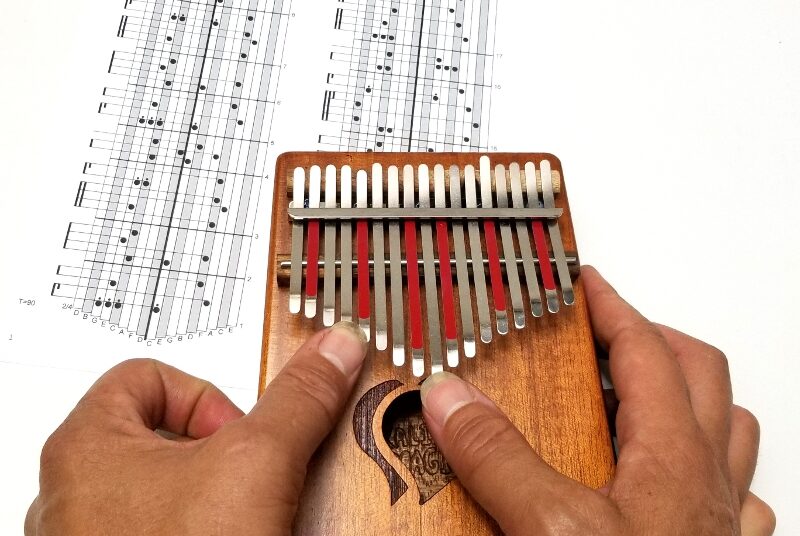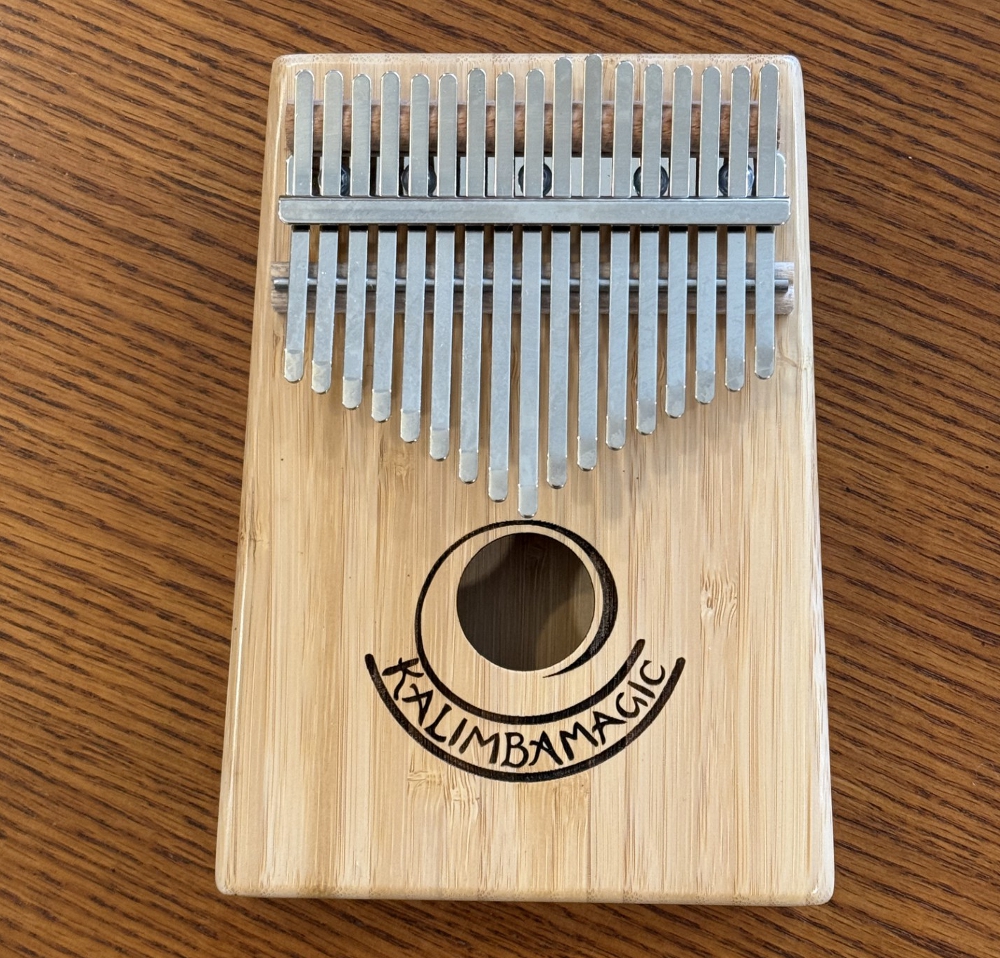
Use of this website constitutes acceptance of the Privacy Policy and User Agreement. Copyright © 2020 Kalimba Magic. All Rights Reserved.
This series of tips is about scales and how useful they are for the kalimba player.
If you start on the middle tine – C – and alternate – right – left – right – left outward and upward and stop 8 notes higher, on the left side’s C, you have just made the C major scale.
Now, instead of starting and ending on C, try starting on the low D just left of the center tine… and alternate your way up the scale, and stop on D. This is a D minor scale.
(By the way, the tablature here is for a 17-Note Kalimba in C, but the concept and even the tablature is the same for many other types of kalimbas.)
Actually, it is a bit more complicated than just calling it a D minor scale. It is the D dorian mode, which is special flavor of minor scale.
But this is amazing. Listen to what those eight notes sound like. It seems to be just like making the C major scale, but instead, it sounds – and FEELS – completely different than the C major.
This is one of the many flavors that is available to you in your kalimba playing.
There are actually seven different modes available to you on your kalimba. You can make those modes by picking a note on which to start the scale, and then zigzagging your way up to the same note an octave higher.
Each different note you pick to start the scale on will have a slightly different feeling to it.
And each different scale can be used as the basis for a melody or a song that expresses that scale’s feeling.


Sign up for our newsletter and free resources with your email address:
We pinky promise not to spam you and to only send good stuff.
 Seek to Infuse Your Musical Moments With Beauty and Magic
Seek to Infuse Your Musical Moments With Beauty and Magic Kalimba Magic – We Give You The Tools You Need to Succeed
Kalimba Magic – We Give You The Tools You Need to Succeed Back in Stock! The Bamboo-17 Kalimba
Back in Stock! The Bamboo-17 KalimbaUse of this website constitutes acceptance of the Privacy Policy and User Agreement. Copyright © 2020 Kalimba Magic. All Rights Reserved.